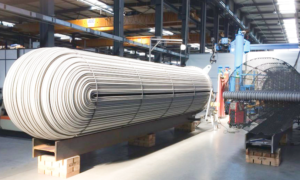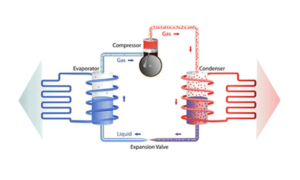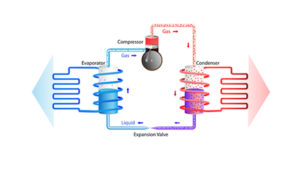Factors like recyclability, high- grade steel structures have led to wide acceptability of steel in areas ranging from industrial applications, to retail to infrastructure.
Green building began as a movement back in the 1960’s over a growing concern over the energy crisis and pollution that was developing in the US and abroad. Although the green building movement originated in the US, it has now spread across the globe in an effort to create more energy efficient and eco-friendly living and work environments, and to reduce untoward environmental impact.
Steel – major structural material
Anil Singh Baghel, Head S&M, Phenix Construction Technologies, says, “Steel is arguably the most sustainable of the major structural materials. It has numerous sustainability benefits, which are guaranteed to be realised whenever steel is used. They include: low waste, flexibility, offsite manufacture, speed, resource efficiency, adaptability, demountability, long lasting appeal, safety, reusability and recyclability.”
He adds, “Steel has a higher strength-to-weight ratio than any other building material. That means fewer resources and materials are needed to build a steel structure to handle the same amount of load or stress.”
Steel building owing to its inherent characteristics viz: almost cent per cent recyclable content, ideal surface for solar energy, rainwater harvesting, natural day light, natural air draft results in low carbon emission.
All the major ingredients of steel building namely primary structures entailing plates of high-yield strength, secondary members encompassing cold rolled coils of high-yield strength, metallic roof and wall cover with zinc aluminium and silicon coating are eco-friendly and ensure recyclable contents.
While aesthetics and functionality remain inalienable, the usage of low volatile organic compound paint and roof cover with high solar reflectance index confirms to the green building norms mandated by the regulatory set up IGBC.
Changing face
Ajay Agarwal, Executive Vice President – Construction Solution Business, Jindal Steel & Power Limited says, “The infrastructure industry has undergone a massive change with the advent of new technologies like composite buildings which uses steel structures along with concrete encasing and new flooring solutions like Speedfloor, pre-cast slabs and hollow core slabs. These buildings can be classified as eco-friendly construction or green buildings owing to various factors which help curb pollution and preserve natural resources.”
Composite construction uses lesser concrete which means less dust or lesser air pollution which is unavoidable in conventional RCC constructions. Lesser concrete consumption in turn leads to less usage of aggregate and sand which is a big factor in the depletion of natural stone quarries and river beds. The consumption of water, which has become a scarce resource these days and a major concern for environmentalists, is also significantly reduced in composite constructions. Composite construction is also about less material movement, resultantly lesser traffic due to high steel density which factors for curbing air pollution furthermore. Additionally, these technologies not only are the answers to today’s persistent issues like sustainable development, environment preservation but have also proven to be aesthetically and technically superior to their conventional counterpart viz. RCC buildings and structures as composite construction utilises all the materials used to their best advantage. Composite construction comprises of concrete and steel. While steel provides strength and agility, concrete can be shaped as desired to achieve a stronger, highly efficient and lightweight structure which is also aesthetically brilliant.
Architects are exploring these strengths of composite construction to design high-rise structures in an extremely efficient manner. Use of high grade steel (E550 and E450) in composite construction leads to advantages like minimal column sizes leading to increase in carpet area, shallower beams leading to increase in clear floor to floor heights, reduction in weight on the foundation and reduction in weight which leads to lower seismic forces. These leave the architect with much more leverage to play around the design of the building without having to worry about its strength.
Measures to save cost in construction of green buildings
Green building initiative
Baghel says, “Green building compliance calls not only for strict vigilance in all activities emanating from conceptualising, designing to procurement and eventually to the execution.”
This procurement in adherence to green building prerequisites is of paramount importance coupled with relevant certificate and documentation.
It circumscribes reduction in low waste generation, waste management, energy conservation and efficient resource utilisation to ensure low carbon excretion. Thus, the activities need to be documented and audited efficiently.
This necessitates procurement from the place not exceeding 500 km (aerial distance).
The steel raw material with recycled material used by steel mills need to be minimum 10 per cent, metal panels with SRI value, polycarbonate sheet with light transmission required, insulation with U-value required, paint with low VOC content (250g/l), turbo vents for natural air circulation etc., are the consequential guidelines to be followed during procurement and shall require test certificates depicting the technical requisites.
High-grade structural steel
“Use of high-grade structural steel in composite construction can save on tonnage of material used per square feet”, says Agarwal. Additionally, the labour cost is significantly lower as the number of labour required is much less. With the use of composite columns along with composite decking and composite beam sit is possible to erect high-rise structures in an extremely efficient manner. There is quite a vertical spread of construction activity carried out simultaneously at point of time, with numerous trades working simultaneously.
For example – One group of workers would be erecting the steel beams and columns for one or two storeys at the top of frame while two or three storeys below, another group of workers would be fixing the metal decking for the floors. As we go down the building, another group will be tying the column reinforcing bars in cages while yet another group below them will be fixing the formwork, placing the concrete into the column moulds etc. and another group will be concreting the floors.
Also the weight of the structure in composite construction with high grade steel is less than the traditional RCC structure leading to economical foundations.
Thus, comparing cost optimisation with time value of money, composite construction is the best choice even if cost is the main concern.
Technology for existing ecosystem
According to Baghel, steel construction is the most versatile mode of construction and thus, has found profound acceptance all across the spectrum, ranging from Industrial applications, to retail to infrastructure to pharma, packaging, food, logistics, commercial etc.
M/s Phenix Construction Technologies values the sensibilities, needs and preferences of its clientele and has always taken a favourable step by embracing the latest technology to address to the need existing in the ecosystem.
M/s Phenix in advent to give filip to the growing demand of green building construction, debuted in 2010-11 with its maiden venture for Pepsico at Sataria, Bajpur and Channo. M/s Pepsico owing to its efficient compliance to green building norms, obtained “Gold rating” from the IGBC.
Phenix since then has constructed numerous green buildings for various applications namely: pharma, engineering, food, packaging for the prestigious clients like Coca Cola, Godrej & Boyce, ACG Pharma, Uflex, TACO etc.
Baghel adds, “Our latest offering is for M/s Coca Cola constructed at sanand, through the EPC firm M/s JLL which has been handed over recently. It is in compliance with IGBC norms.”
It skirted gravity vent with 900-mm throat diameter for natural ventilation along with continuous windows for inlet.
It uses polycarbonate panel at roof and wall as natural source of day light and all the structural members were painted with low VOC paint.
Roof panels had solar reflective coating so that it can reduce energy consumption by lowering down the energy required to cool the building, thus surfmist colour having 78 SRI with insulation was selected.
Furthermore, liner panel at both roof and wall for thermal regulation were deployed. Adequate sized gutters and downcomers taking cognizance of region specific rain fall intensity to discharge the rain water was provisioned and the downcomers were led to the trap for rain water harvesting.
This 32,500-sqm building at provision for fixing solar panels at crest of Standing Seam Roof Panels. The building entailed box type columns all around and direct to metal low VOC corrosion resistant PU paint was employed to comply with green building norms for Indoor environment quality and occupational health.
A sustainable approach
Green building construction like composite construction is a far more sustainable approach when compared to RCC construction. It also answers many more sustainability issues like the meteoric rise in the population along with rapid urbanisation, which has led to horizontal space constraint in the metros. This calls for maximum utilisation of the space vertically with the most affordable and efficient building designs. Composite construction comes to the rescue wherein high-rise structures can be erected with much ease and speed.
Agarwal says, “Green buildings can be made more sustainable by adopting more and more technologies like high- grade steel structures instead of lower grades wherein the consumption of steel per square feet is significantly reduced.” The recyclability of steel after the life cycle of the building is also a big factor contributing to sustainability of these buildings and ought to be practiced religiously as more and more buildings convert into composite structures.
Cookie Consent
We use cookies to personalize your experience. By continuing to visit this website you agree to our Terms & Conditions, Privacy Policy and Cookie Policy.















